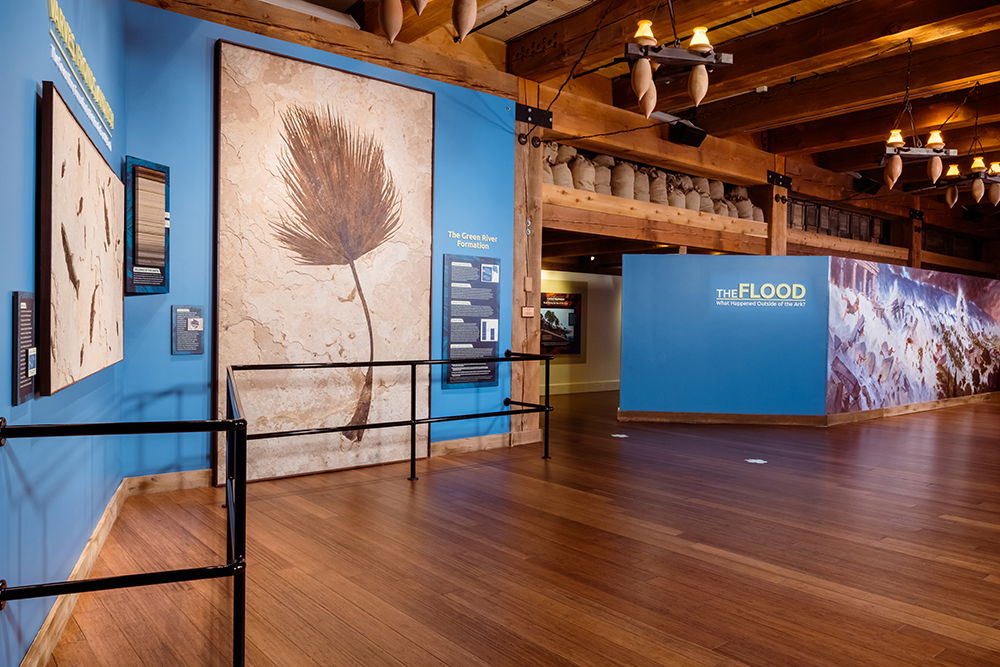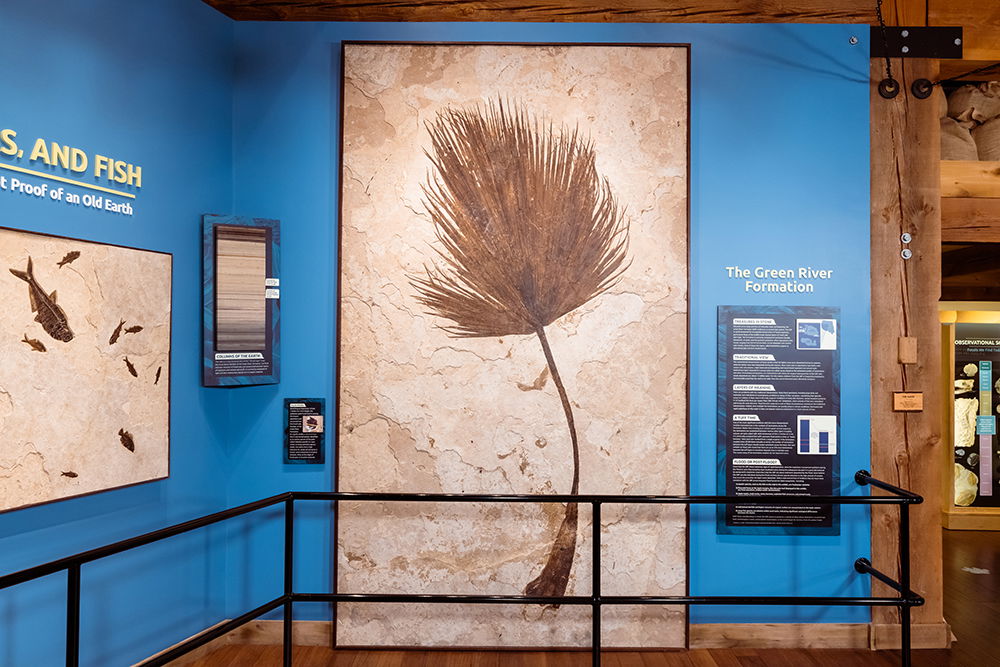The Ark Encounter’s Flood Geology Exhibit Gets Stunning Upgrade
by Ark Encounter on January 19, 2023After coming around the corner from the deck three theater inside the life-size Noah’s Ark, many guests’ jaws drop as they encounter the new addition to our Flood Geology exhibit. Two massive fossils, both from Wyoming’s Fossil Lake portion of the multistate Green River Formation, display the effects of rapid, catastrophic burial in incredible detail. Together with a custom mural, it’s a striking upgrade that’s already a new favorite photo spot!
Learn more about these new additions to the Flood Geology exhibit below.

Unique Fossils
The tall plant fossil is a palm frond, and it’s huge—10 feet, 7 inches tall. This member of the fan palm species, Sabalites powelli (presumed extinct), is very similar to living palmettos and is one of the largest specimens ever extracted from this formation. The fish fossil is comprised of five different fish species, incredibly preserved with no evidence of decay or scavenging.

Background Information
Accompanying signage provides background information on the formation where these fossils were found and shows how this location preserves overwhelming evidence for catastrophic burial of the type that occurred during and shortly after Noah’s flood, not for slow and gradual processes over millions of years.

Custom Mural
The custom mural reminds guests that the floodwaters did more than just create rock layers and bury hapless creatures in the torrent. The primary purpose of this catastrophe was to judge sin by destroying the world of that time. To drive this message home, the mural depicts floodwaters crashing into a city as individuals flee. It’s a sobering picture and a reminder to consider the gospel message that guests hear during the theater presentation.

Start planning your visit to the Ark Encounter today, and don’t miss seeing this new addition for yourself.